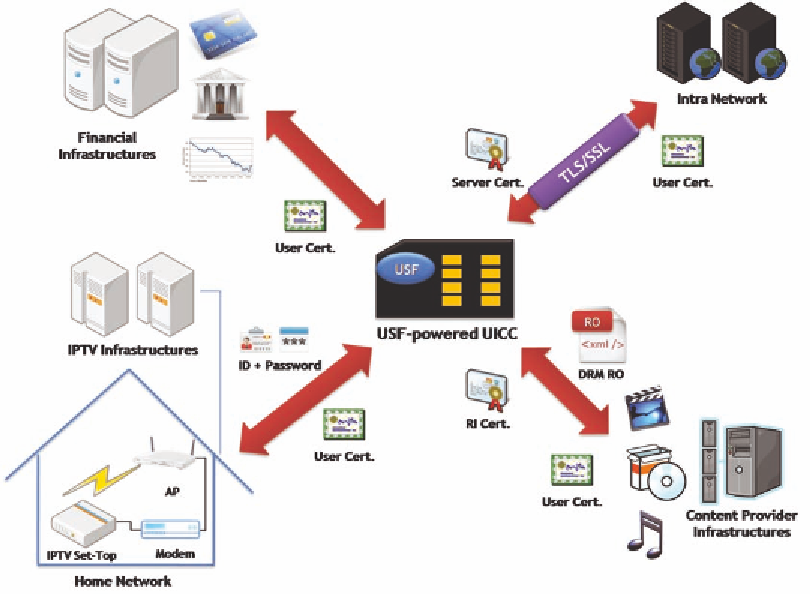Information Technology Reference
In-Depth Information
Figure 7. The USF-based Integrated Personal Authentication in the Pervasive FMC Environments
devices. Accordingly, the content provider may
be afraid of illegal distribution of their products.
The USF can be the solution to address above
issue since it supports the DRM Engine interwork-
ing with PKI Engine. Suppose that the customer
buys content of one movie via the mobile terminal.
When returning home or visiting friends' places,
the customer may want to see this movie content
with family or friends via the IPTV. The movie con-
tent should be protected by the DRM and be played
by the mobile terminals where the USF-powered
UICC is inserted so that illegal distributions can
be blocked. If the customer would like to play that
content in other devices, the corresponding DRM
RO stored in UICC could be passed securely to
the server in charge of verifying the ownership of
the paid contents. For this secure communication,
the SC Engine can be involved. After completion
of the verification, the server will transfer same
content for IPTV with the combined RO to the
IPTV set-top box. Then, the set-top box plays the
movie content using the embedded DRM mod-
ule. The example of the USF-based multimedia
contents shared among heterogeneous devices is
shown in Figure 8. This figure shows two possible
scenarios of the USF-based multimedia contents
shared among FMC devices.
Anti-Virus Solution
In the pervasive FMC environments, the terminal
can be connected to various kinds of networks
simultaneously. This means that the possibility
that the terminal is infected by various malicious
codes can increase drastically.
The USF supports the Anti-Virus Engine as
shown in Figure 9, which scans and cures the
malicious codes. The viruses which infect the files

Search WWH ::

Custom Search